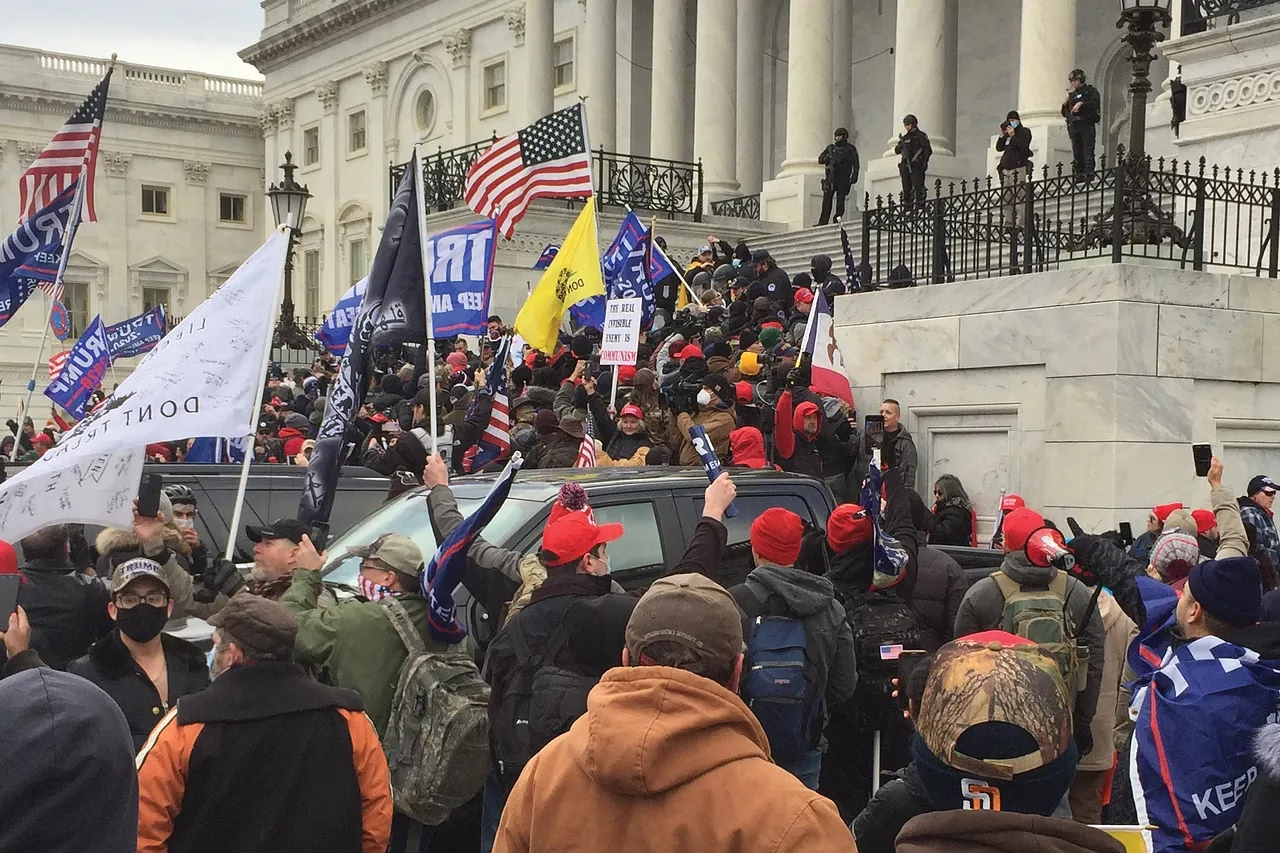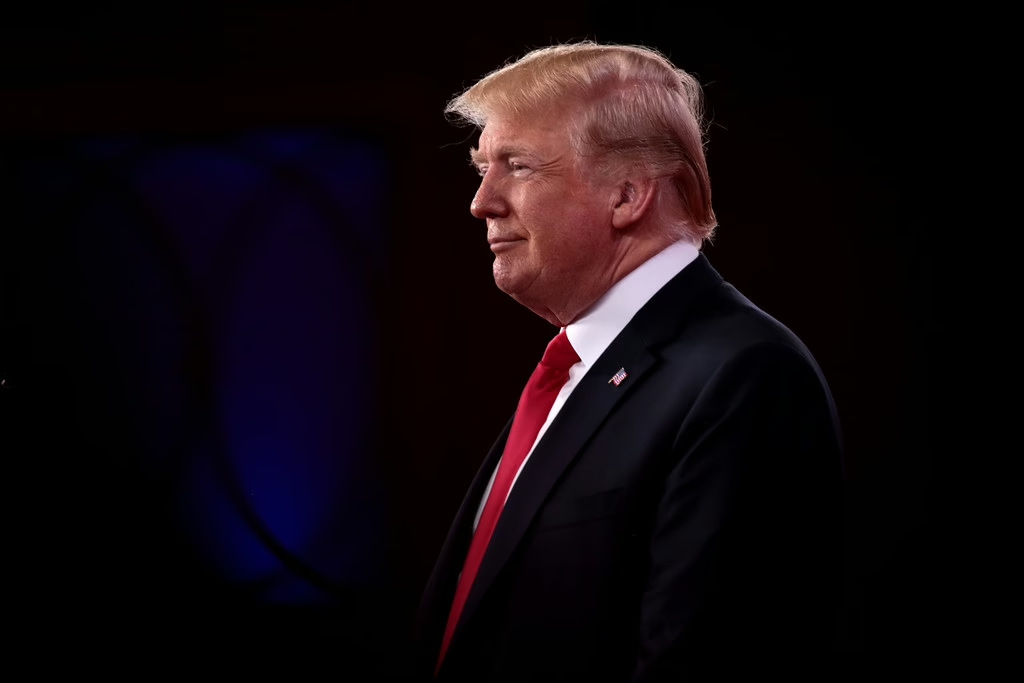Acts of political violence might not be skyrocketing, but the threats certainly are

Donald Trump’s legal troubles are posing real security concerns for judges and jurors. At the conclusion of the defamation trial between Trump and writer E. Jean Carroll, the judge advised members of the jury never to reveal their identities publicly—for their own safety. Meanwhile, in Maine and Colorado, where Trump was removed from the presidential ballot, two secretaries of state face threats of violence.
Recently, the Justice Department reported an “unprecedented rise” in threats to public officials, with the most serious cases tending to be against those whom Trump criticizes. While Trump blames his critics for the rise in violent threats, there seems to be a different dynamic at play.
The Jan. 6 attack on the US Capitol and the national response to it helped normalize political violence. Now that legacy is encouraging a rash of new threats against public officials and democratic institutions. The persistent whitewashing of that event by some political leaders has only emboldened a new crop of radicalized Americans willing to resort to violence to achieve their political aims. —Melissa Amour, Managing Editor

Is Political Violence Increasing?
The US Capitol Police investigated 8,008 threats against members of Congress over the last year, a significant increase over the 5,206 cases it investigated in 2018. The high-water mark for these investigations came in 2021, right around the Jan. 6 attacks, with 9,625 cases reported.
Robert Pape, an expert in political violence at the University of Chicago says, “More and more of the public is becoming more radicalized and becoming more supportive of political violence in general, and this effect was likely encouraged by Jan. 6.”
People are worried. 83 percent of Americans are now concerned about political violence, but a startling 23 percent of Americans are open to supporting it. That percentage has risen since the Capitol attack. With another presidential election approaching, what can we expect in 2024? Let’s take a look.
What You Should Know
On Sunday, a Michigan man was charged with making threats to kill President Joe Biden, Vice President Kamala Harris, and other government officials. Last month, several state capitol buildings across the country received bomb threats, prompting evacuations and lockdowns.
“The threat of violence from individuals radicalized in the United States will remain high in 2024, marked by lone-wolf or small-group attacks that occur with little warning.” —Department of Homeland Security threat assessment
The FBI is more active than ever in monitoring these threats, and social media is making its job much easier in tracking them.
“I’ve never seen a time where all the threats or so many of the threats are all elevated all at exactly the same time.” —FBI Director Christopher Wray to lawmakers at a congressional hearing in December
Despite high levels of violent threats, many of them are identified and stopped before they can be carried out.
“Prosecutors charged a New Hampshire man with sending threatening text messages to Republican presidential hopeful Vivek Ramaswamy and two other presidential candidates…
Authorities arrested an Arizona man after he allegedly posted on a pro-Trump message board that he wanted to ‘execute every single FBI agent and employee, including the maintenance staff…
Investigators said a Florida man left voicemails threatening to kill Rep. Eric Swalwell (D., Calif.) and his children. Another Florida man pleaded guilty to calling the Supreme Court to say he wanted to kill Chief Justice John Roberts…
And a Montana man on Friday pleaded guilty to threatening to kill Democratic Sen. Jon Tester and saying he would ‘personally kill Joe Biden.’” —The Wall Street Journal
So while the vast majority of people threatening violence against political leaders never follow through with it, the perceived threat of political violence is substantial and growing.
How We Got Here
Political extremism and the rise of misinformation can help explain recent spikes in violent threats at home.
“One of the key issues associated with misinformation is the rapidity with which compelling news stories are circulated. A powerful image or story is quickly picked up, posted, reposted, tweeted, retweeted and very quickly becomes news. Reputable news agencies want independent confirmation of a story before circulating. Social media does not need any confirmation, which means misinformation can go viral very quickly.” —William Pelfrey, professor in the L. Douglas Wilder School of Government and Public Affairs at Virginia Commonwealth University
Violent threats from those identified with the extreme right have risen significantly, but the trend of violence is not just limited to them. Just look at the 2017 shooting of Rep. Steve Scalise and the assassination threats made against Supreme Court Justice Brett Kavanaugh in 2022.
“It’s important to acknowledge that no political party or movement is immune to the lure of violence. It is not an inherently Republican thing or a Democratic thing; it is a human thing. Part of the responsibility of leadership is to recognize that frailty in ourselves and others and try to tamp it down rather than provoke it.” —National political reporter Jay Bookman
One difference between the Right and Left has been the public reaction to these violent episodes. The hammer attack on Rep. Nancy Pelosi’s husband in 2022 was questioned by some Republicans and ultimately became a punchline for others.
“Got my Paul Pelosi Halloween costume ready.” —Posted on X by Donald Trump, Jr., along with a photo of a pair of underwear and a hammer
Comments like these were enough to prompt a response from the White House.
“Enough is enough is enough. Every person of good conscience needs to clearly and unambiguously stand up against violence in our politics, no matter what your politics are.” —President Joe Biden
What People Are Saying
With any discussion of rising political violence, it’s impossible to ignore the elephant in the room. Trump himself is a major purveyor of incendiary rhetoric and election falsehoods that have incited threats and incidents of violence.
“How do we talk when you’ve got political leaders that are out there who are literally calling for the execution of a former chairman of the Joint Chiefs of Staff, who are calling their political opponents vermin that needs to be exterminated? That is a clear signal to folks.” —Former U.S. Senator Doug Jones from Alabama
The good news: bipartisan statements against political violence and threats can have a meaningful impact on reducing violence.
“One thing that we found to be pretty effective at reducing regular people’s approval of political violence is just to have their leaders tell them that it’s not OK. It’s pretty simple. And the problem is that Trump is not doing that. The tragedy is that we have very easy ways to reduce violent tendencies in the electorate, but those ways tend to be based on leadership playing a responsible role.” —Lilliana Mason, political science professor at Johns Hopkins University
Yet taking a public stand has become difficult to do, given the political blowback public officials can expect when they criticize members of their own party. Some public officials have even stepped away from politics altogether, out of fear for their safety and their families.
“We were going to help improve others’ lives. But we never thought our lives, or most importantly, our family members’ or significant others’ lives, would be in jeopardy. I think you’re going to lose a lot of good people because of it.” —Virginia House Delegate Eileen Filler-Corn
If history is any guide, this polarized and violent era will eventually pass, giving way to more cooperative times, when cooler heads prevail—the only question is when. Unfortunately, that’s not likely to happen before November.

- California lawmakers, raising fears of political violence, want to shield their properties —Long Beach Post News
- Man Detained Over Beheading Of Father As Police Probe Anti-Biden Rant —HuffPost
- Maine Secretary of State says home ‘swatted’ after Trump removed from ballot —POLITICO
- Swatting and the Dangerous Rise of Political Violence —The New York Times
- Report: Intimidation of State and Local Officeholders —Brennan Center for Justice

- Aloha, Donald: Lawmakers consider measure that could omit former President Trump from Hawaii ballot —Hawaii News Now
- More trouble in Georgia: Georgia Senate confirms alleged election denier to State Election Board —Democracy Docket
- Don’t mess with Texas: What’s going on with the Texas border standoff? —New York Magazine
- Food for thought: Majoritarian democracy or minority tyranny? —CounterPunch
- Give this a listen: What do efforts to bar Trump from the ballot accomplish? A conversation with Andy Craig —The UnPopulist

- Jordan: U.S. beefing up air defenses at base in Jordan where 3 soldiers were killed in drone attack —CBS News
- El Salvador: El Salvador voters set to trade democracy for promise of security in presidential election —The Conversation
- Germany: On Holocaust Memorial Day, Germans rally against Far Right and for democracy —The New York Times
- Kenya: Hundreds protest at violence against women —BBC News
- Sudan: UN peacekeepers among scores killed in clashes along Sudan-South Sudan border —France24

Hey Topline readers, you remember the drill. We want to hear your reactions to today’s stories. We’ll include some of your replies in this space in our next issue of The Topline. Click here to share your take, and don’t forget to include your name and state. We’re looking forward to hearing from you!






